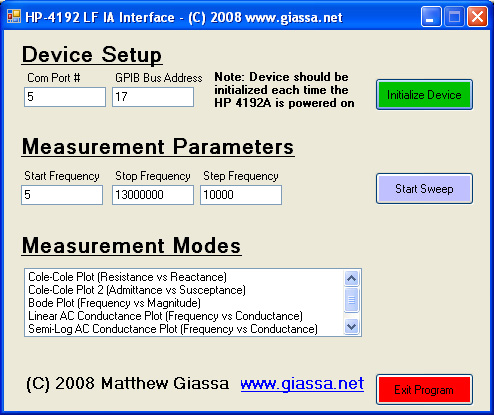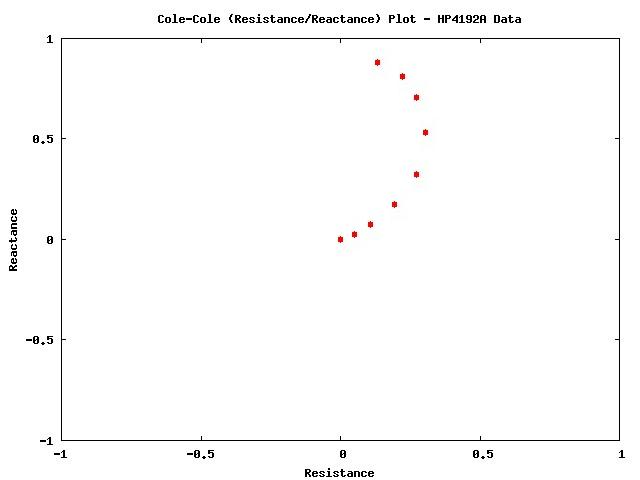Over the past year I have been doing a considerable amount of research in the field of biomaterials and electrical impedance tomography (EIT). EIT allows for an impedance map of a material under study to be generated rapidly using an impedance analyzer or similar instrument. I have since produced a conference paper on this subject with respect to its applications in breast cancer screening at an IEEE conference earlier this year. Before I gained such interest in the subject, I started out as a volunteer, designing interfaces and GUIs for lab equipment used in the engineering labs at SFU.
My first major task: take an HP/Agilent 4192A low frequency impedance analyzer, with a GPIB interface, and design a system that allows it to interface with a modern PC via USB, and:
- Provide a GUI that allows for all features of the impedance analyzer to be controlled via software
- Automate frequency sweep and current-voltage sweeps, recording the data for future analysis
- Generate plots, such as Cole-Cole plots, Bode plots, and so on
After several weeks of development, I finally designed an application that did just this: GPIBcmd (General Purpose Interface Bus CoManD). With this system in place, the entire system is handled with ease via a small netbook running Windows XP or Linux (I designed it for both OS’s, Windows screen shot shown below).

The main menu for the application
The system utilizes a ProLogix GPIB-USB controller, and the control and GUI code I designed. The software I designed was made with modularity in mind. It can be easily extended to allow for other Agilent devices that utilize GPIB to be controlled in a similar manner. Finally, it generates 2D plots as shown below.

Sample Cole-Cole Plot
